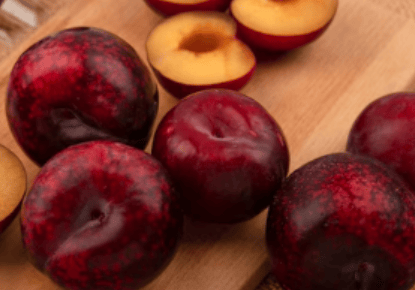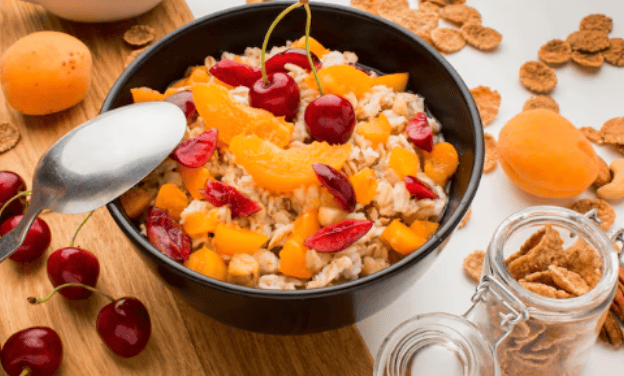Let’s be honest—constipation is something most of us deal with at some point, and it’s never pleasant. The bloating, discomfort, and irregularity can really take a toll on your daily life. But the good news? One of the most effective, natural ways to get things moving again is right on your plate.
Increasing your fiber intake can make a world of difference. Fiber helps by adding bulk to your stool and softening it, making bowel movements easier and more regular. And unlike over-the-counter laxatives, fiber supports long-term digestive health—without the side effects.
In this article, we’ll highlight five of the most effective high fiber foods for constipation. These aren’t just healthy—they’re also easy to find, simple to prepare, and backed by science. Whether you’re struggling with occasional irregularity or looking to keep your digestive system running smoothly, these constipation relief foods are a smart, natural solution.
How Fiber Helps Relieve Constipation
When it comes to natural remedies for constipation, fiber is one of the most effective—and safest—options available. But not all fiber works the same way, and understanding the difference can help you get the best results.
There are two main types of dietary fiber: soluble and insoluble.
- Soluble fiber absorbs water in the digestive tract, forming a gel-like texture that softens stool and makes it easier to pass.
- Insoluble fiber, on the other hand, adds bulk to stool and helps it move more quickly through your intestines, preventing sluggish digestion.
Together, these types of fiber for digestive health promote regular bowel movements and reduce the strain and discomfort that often comes with constipation.
So how much do you need? Most adults should aim for 25 to 30 grams of fiber per day, though many fall short of that goal. The key is to increase your intake gradually to give your digestive system time to adjust.
And don’t forget about hydration—fiber needs water to do its job. Drinking enough fluids is essential to prevent bloating and keep things moving smoothly.
5 High-Fiber Foods to Relieve Constipation
Looking for the best fiber foods for constipation? You’re not alone. Many people struggle with irregular bowel movements, but the solution often starts with simple changes to your diet. Below are five proven, fiber-rich foods that support smoother digestion and provide natural relief—without harsh laxatives.
1. Prunes

Prunes are one of the most well-known foods good for bowel movements, and for good reason. They contain both soluble and insoluble fiber, as well as sorbitol, a natural sugar alcohol with a mild laxative effect. Studies have shown that eating just a few prunes per day can significantly improve stool frequency and consistency.
How to Use: Enjoy them as a snack, chop them into salads, or blend them into smoothies for a sweet and functional boost.
2. Chia Seeds
Tiny but powerful, chia seeds are loaded with soluble fiber. When soaked in liquid, they form a gel-like texture that helps soften stool and promote regularity. Just one tablespoon provides nearly 5 grams of fiber.
How to Use: Stir them into yogurt, oatmeal, or smoothies. Or make chia pudding by soaking them in milk or a dairy-free alternative overnight.
3. Oats
Oats are another gentle, reliable option for constipation relief. They contain beta-glucan, a type of soluble fiber that helps stool retain water and move more easily through your system.
How to Use: Have a bowl of oatmeal for breakfast, bake oat muffins, or add oat flour to pancakes and other recipes.
4. Apples (with Skin)
Apples are rich in insoluble fiber, especially in the skin, which helps add bulk to stool. They also contain water and natural sugars that can further support gut movement. A medium apple delivers about 4 grams of fiber.
How to Use: Eat them raw as a snack, slice them over salads or oats, or bake them with cinnamon for a healthy dessert.
5. Lentils
Lentils are a powerhouse of both soluble and insoluble fiber, providing around 15 grams per cooked cup. They help speed up intestinal transit while also feeding beneficial gut bacteria, making them excellent foods good for bowel movements.
How to Use: Add them to soups, stews, or grain bowls. They’re also great as a meat substitute in tacos or veggie burgers.
Incorporating these best fiber foods for constipation into your diet can help restore comfort and regularity naturally. Coming up next: easy tips to make fiber part of your everyday routine.
Tips for Adding More Fiber Safely
Adding more fiber to your diet is one of the best things you can do for your gut—but doing it too quickly can lead to gas, bloating, or discomfort. The key to improving fiber intake for better digestion is to go slow and stay consistent.
Start by increasing fiber gradually. If your body isn’t used to high-fiber foods, jumping in too fast can overwhelm your digestive system. Begin with small portions and slowly work your way up over a week or two.
Hydration is essential. Fiber works best when it has enough water to absorb. Aim to drink at least 6–8 glasses of water daily—especially with fiber-rich meals. This helps keep things moving smoothly through your intestines.
Pairing fiber with regular physical activity can also help. Movement stimulates digestion and encourages regular bowel movements.
Most importantly, listen to your body. Everyone reacts a bit differently to dietary changes. If a certain food feels too heavy or causes bloating, scale back and try a different source of fiber instead.
These small adjustments can make a big difference when you’re learning how to relieve constipation naturally—and they’ll help set the foundation for better digestion long-term.
FAQs About Fiber and Constipation
How quickly do high-fiber foods relieve constipation?
For most people, dietary changes can bring relief within a few days to a week. However, results vary depending on your current diet, hydration, activity level, and how much fiber you’re adding. Gradual, consistent changes work best when using natural remedies for constipation.
Can too much fiber cause constipation?
Surprisingly, yes—especially if you’re not drinking enough water. Fiber needs fluid to do its job. Without it, excess fiber can actually slow things down or lead to bloating and discomfort. Balance is key.
Are fiber supplements as good as food sources?
Fiber supplements (like psyllium husk) can help, but they shouldn’t replace whole foods. Whole foods offer vitamins, minerals, and antioxidants in addition to fiber, which supports your overall gut health. Think of supplements as a backup, not the main plan.
How much fiber should I eat daily for constipation relief?
Most adults should aim for 25 to 30 grams of fiber per day. If you’re dealing with constipation, gradually working up to this amount from whole food sources is a safe and effective strategy.
Are high-fiber foods safe for kids or seniors?
Yes—with a few considerations. Both children and older adults can benefit from more fiber, but they may need smaller portions to start. Always introduce high-fiber foods slowly and ensure adequate hydration.
Conclusion
Constipation can be frustrating, but in many cases, simple diet changes can offer real relief. Adding more high fiber foods for constipation is one of the easiest and most natural steps you can take toward better digestive health.
The five foods highlighted—prunes, chia seeds, oats, apples, and lentils—are not only effective but also easy to enjoy in everyday meals. Whether you’re looking for a gentle fix or long-term support, these are smart additions to your routine.
Remember, when it comes to natural constipation relief, slow and steady wins the race. Gradually increasing your fiber intake—alongside plenty of water and movement—can help your gut adjust comfortably.
With consistent habits and the right foods, you can enjoy smoother digestion and greater comfort every day. Small changes really do add up to better health.
